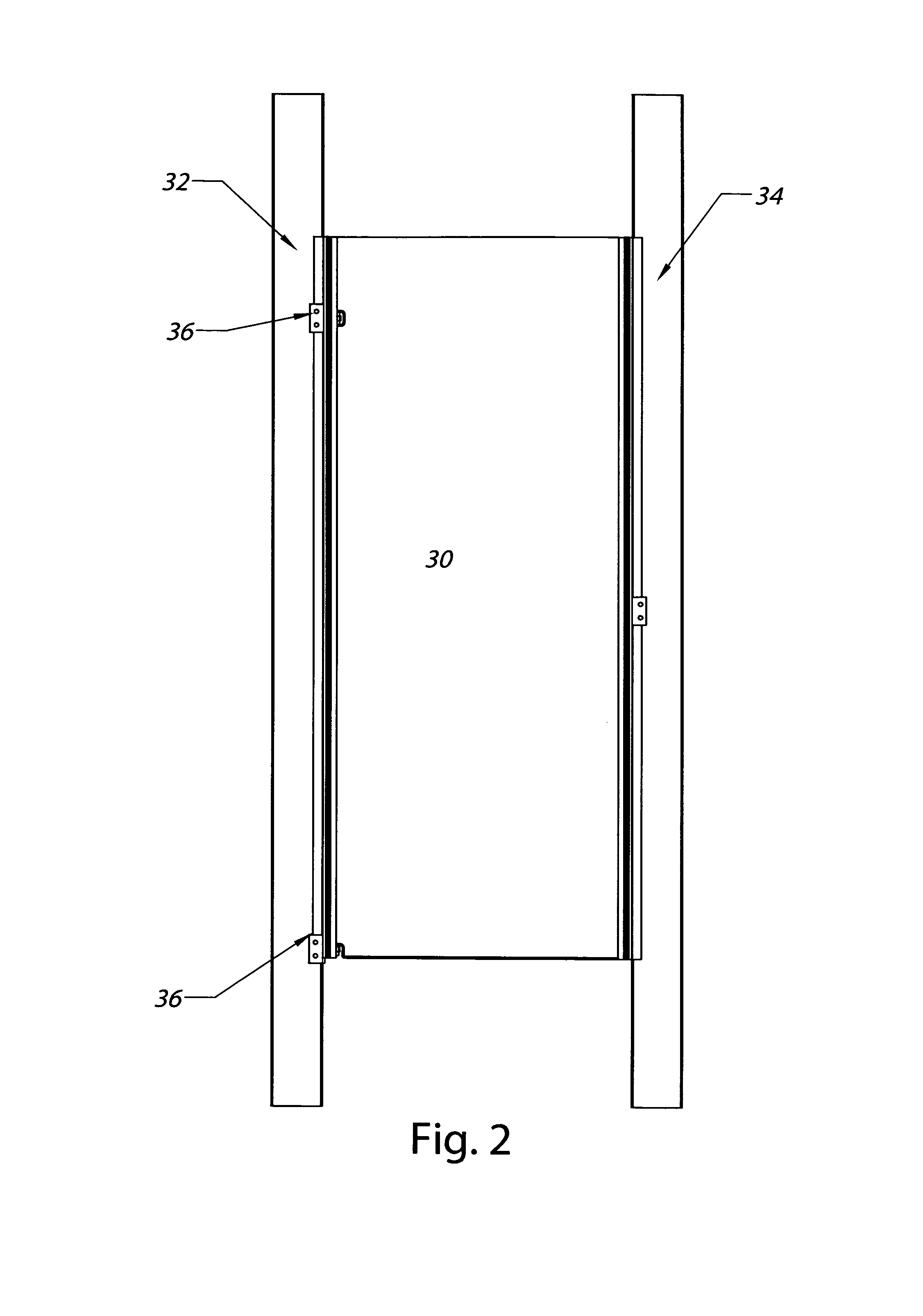Privacy enclosure
- Summary
- Abstract
- Description
- Claims
- Application Information
AI Technical Summary
Benefits of technology
Problems solved by technology
Method used
Image
Examples
Embodiment Construction
[0018]According to the invention a privacy enhancer that can be applied to existing privacy enclosures preferably a public restroom optionally a dressing or fitting room for trying on clothing in a store is provided. In another aspect of the invention, a privacy enclosure is provided which affords improved privacy. Preferably the privacy enclosure is a public restroom. Optionally the privacy enhancer can be installed during construction of the privacy enhancer. The enclosure can be made of a variety of materials for example steel, stainless steel, formica and the like.
[0019]The enclosure preferably a restroom stall typically has a back wall and sidewalls connected to the back wall. Opposed pilasters are connected to the sidewalls of the enclosure. The enclosure has an entrance defined by spaced apart pilasters and a swinging door mounted to one of the pilasters by hinges to close off the entrance and provide privacy. A latch is provided on the door for engagement with a keeper provi...
PUM
 Login to View More
Login to View More Abstract
Description
Claims
Application Information
 Login to View More
Login to View More - R&D
- Intellectual Property
- Life Sciences
- Materials
- Tech Scout
- Unparalleled Data Quality
- Higher Quality Content
- 60% Fewer Hallucinations
Browse by: Latest US Patents, China's latest patents, Technical Efficacy Thesaurus, Application Domain, Technology Topic, Popular Technical Reports.
© 2025 PatSnap. All rights reserved.Legal|Privacy policy|Modern Slavery Act Transparency Statement|Sitemap|About US| Contact US: help@patsnap.com



